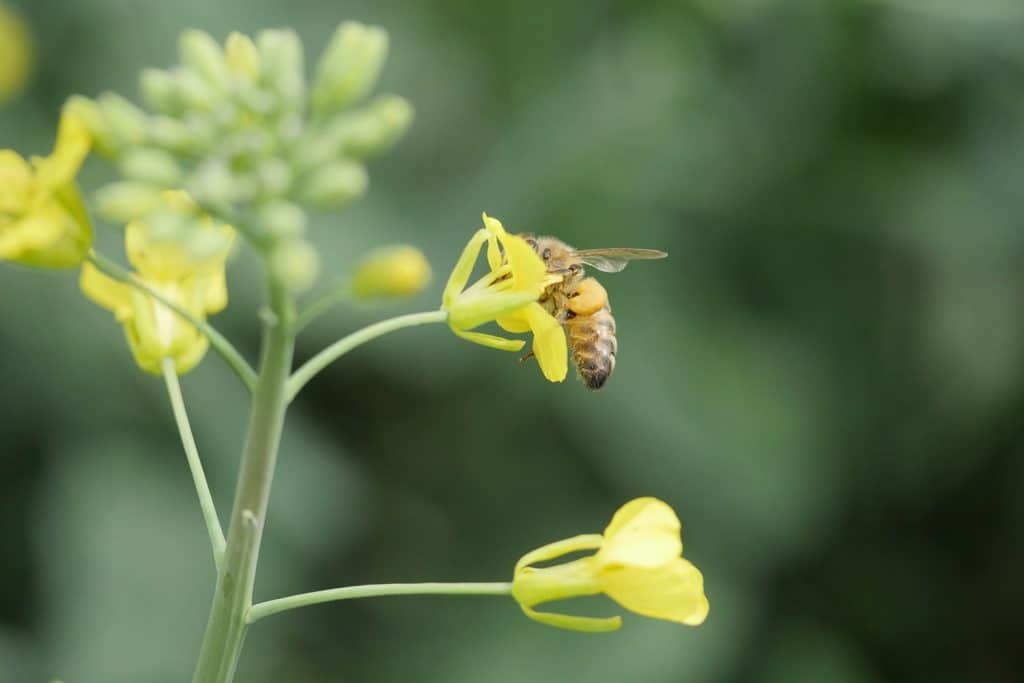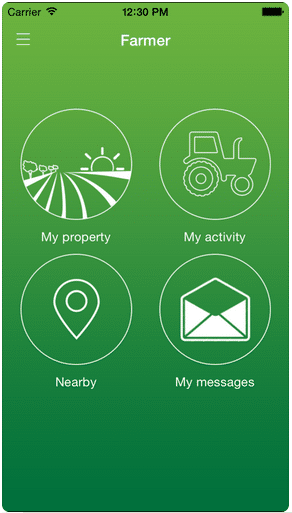Bee-friendly tips for canola growers

There are good reasons to consider bees and other pollinators when making pest control plans. The most important tool is good communication between canola growers and hive owners.
To learn more about the benefits of cooperation, check out the bees and canola video playlist.
What growers can do
Talk to hive owners and use BeeConnected
Share your pest management plans with honey producers in the area. Armed with this information, beekeepers can then reduce exposure by moving or covering their hives during spray applications.
BeeConnected is a free app that helps farmers, pesticide applicators and beekeepers communicate through an internal messaging system. Register and learn more at beeconnected.ca.
Don’t spray when canola is in flower unless absolutely necessary
Wait until the field is no longer in bloom. If you must spray while canola is in flower, pay extra attention to the following precautions.
Avoid spraying during peak foraging times
Studies show that bees are most likely to feed on canola in the early morning hours, when secretion of nectar is highest (Nedic et al, 2013). Bee visits peak around 10 a.m., and drop off noticeably by late afternoon. By 7 p.m., the number of bees still foraging is only about a third of what it would be at the 10 a.m. peak.
Spray after 9 p.m.
By this time, most bees have finished feeding and returned to the hive.
Check weather conditions
Pay careful attention to wind speed and direction, particularly as it relates to bee yards or other flowering plants.
Give good instructions to commercial applicators
Tell the applicator exactly where hives are located.
Use economic thresholds and integrated pest management
By optimizing pesticide use and spraying only when it will increase profits, you can save input costs and reduce stress on bees. Choose the least toxic solution to control the pest problem.
What beekeepers can do
Maintain dialogue with farms operating near bee yards
A gentle in-person reminder can go a long way toward raising awareness of hives typically placed in sheltered areas.
Inform growers of the risks of pesticide use to bees
For best management practices to protect pollinators, you can reference this material or provincial government extension data.
Use the BeeConnected app
BeeConnected is a free app that helps farmers, pesticide applicators and beekeepers communicate through an internal messaging system. Register and learn more at beeconnected.ca.
Consider covering or moving hives when pesticide applications are happening
This may prevent some losses, but can be challenging and can create risk of colony loss due to overheating and disturbance.
Report any acute bee kills
Beekeepers are encouraged to contact the Pest Management Regulatory Agency so the causes of acute bee kills can be addressed.
How bees benefit canola
Hybrid seed production
Pollination is a must-have for quality hybrid seed production. One study showed that the presence of pollinators can increase the germination of resulting seeds from 83% to 96%. 1
Higher yields with better ripening
Pollination by bees can improve canola productivity and quality – in part because bees transfer pollen more efficiently than self-pollination.
Several studies have shown that bees help to:
- Promote more uniform flowering and earlier pod-setting, 2 3 which has the potential to reduce green seed counts
- Increase pods per plant, seeds per pod and seed weight 4 5 6
- Reduce the amount of time canola blooms by 17% 2
- Increase seed weight per plant by anywhere from 13% 7 to nearly 50% 5
Disease control
Biological control of insect and fungal pests has shown promise, but the technology requires an appropriate delivery mechanism. Honey bees may be a solution. Researchers are exploring the potential for honey bees to spread beneficial fungi for keeping insects like Lygus bugs at bay.
About the BeeConnected app
BeeConnected is a free app provided to the community by CropLife Canada. It uses an internal messaging system to open up lines of communication between registered farmers, pesticide applicators and beekeepers.
Contractors and farmers can input information on crop protection activities that may be of interest to a beekeeper, and beekeepers are able to notify nearby farmers of the location of their hives.
Register and learn more at beeconnected.ca.

Footnotes
- Kevan PG, and Eisikowitch D. 1990 The effects of insect pollination on canola (Brassica napus L. cv. O.A.C. Triton) seed germination. Euphytica 45:39–41[↩]
- Abrol, DP. 2007. Honeybees and rapeseed: A pollinator-plant interaction. Advances in Botanical Research. 45: 337-367[↩][↩]
- Sabbahi, R., de Oliveira, D., Marceau J. 2006. Does the Honeybee (Hymenoptera: Apidae) reduce the blooming period of canola? Agronomy & Crop Science 192, 233—237. 2006 Blackwell Verlag, Berlin ISSN 0931-2250[↩]
- Durán X.A., Ulloa R.B., Carrillo J.A., Contreras J.L., and Bastidas M.T. Evaluation of Yield Component Traits of Honeybee-Pollinated (Apis mellifera L.) Rapeseed Canola (Brassica napus L.) Chilean Journal of Agricultural Research 70(2): 309-314 (April-June 2010) [↩]
- Sabbahi, R., de Oliveira D., and Marceau, J. 2005. Influence of honey bee (Hymenoptera: Apidae) density on the production of canola (Crucifera: Brassicacae). J. Econ. Entomol. 98, 367—372[↩][↩]
- Steffan-Dewenter I (2003) Seed set of male-sterile and male-fertile oilseed rape (Brassica napus) in relation to pollinator density. Apidologie 34:227–235[↩]
- Free, J.B. & P.M. Nuttall. 1968. The pollination of oilseed rape (Brassica napus) and the behaviour of bees on the crop. Journal of Agricultural Science. 71: 91-94[↩]